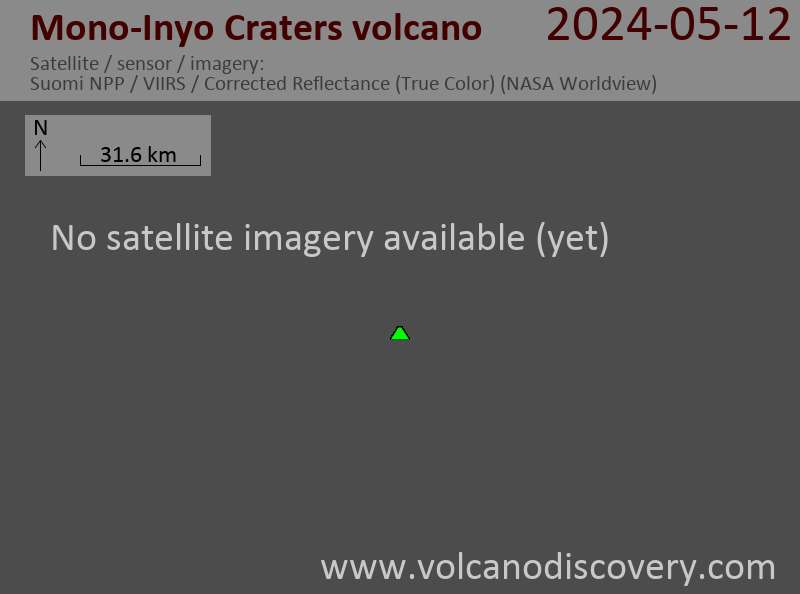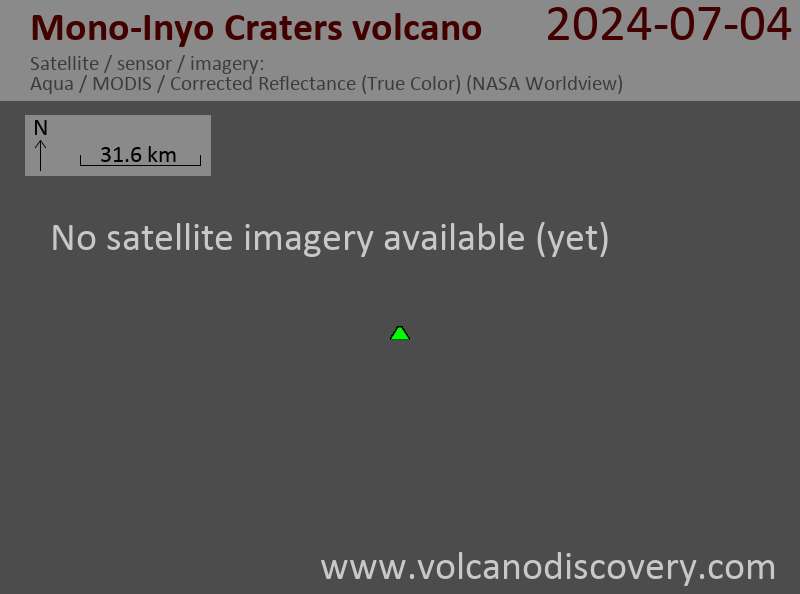Mono-Inyo Craters Volcano
The Mono-Inyo Craters for an elongated, 17 km long chain of lava domes, cinder cones and maars on the eastern side of the Sierra Nevada between Mono Lake and Long Valley caldera, California. The last eruption at the Mono Craters took place about 600 years ago, nearly contemporaneously with the eruptions from Inyo Craters to the south. It formed tephra rings and obsidian lava domes, lava flows and locally extensive ash and pumice layers. The most known crater of the group is Panum crater.
Mono-Inyo Craters volcano eruptions: 1350 ± 20, 1000 ± 200, 810 ± 300, 700 (?), 490 ± 100, 440 ± 100, 10 ± 200,
700 BC ± 1000, 3850 BC ± 1000, 6750 BC ± 1000
Latest nearby earthquakes
| Date and Time | Mag / Depth | Distance / Location | |||
|---|---|---|---|---|---|
| Aug 7, 08:04 am (GMT -7) | 2.6 14 km | 26 km (16 mi) to the NE | Info | ||
| Tuesday, August 5, 2025 GMT (1 quake) | |||||
| Aug 5, 04:15 am (Universal Time) | 1.6 14 km | 26 km (16 mi) to the NE | Info | ||
| Monday, August 4, 2025 GMT (1 quake) | |||||
| Aug 4, 03:48 am (Universal Time) | 0.3 3.9 km | 28 km (17 mi) to the SE | Info | ||
| Friday, August 1, 2025 GMT (1 quake) | |||||
| Aug 1, 07:06 am (Universal Time) | 0.2 1.5 km | 25 km (15 mi) to the SE | Info | ||
Background
The volcanic field is associated with an extension of the crust in a tectonic basin on the east side of the Sierra Nevada. Explosive eruptions started more than 50,000 years ago, but almost all of the exposed domes and flows are less than 10,000 years old. In the past few 1000 years, activity has shifted both to the north and south from the center of the chain.Significant volcanic eruptions: Mono-Inyo Craters volcano
| Date | Note | VEI | Deaths | Damage | |
|---|---|---|---|---|---|
| Inyo Craters (S Deadman, Obsidian, Glass Creek) | 4 | ||||
| Mono Craters (Panum Crater, nearby vents) | 4 | ||||
| Mono Craters (dome on NW edge of NW Coulee) | ? | ||||
| Southern Mono Craters (South Coulee area) | 4 | ||||
| Mono Craters (NW Coulee and Pumice Pit dome) | ? | ||||
| Southern Mono Craters | ? | ||||
| Mono Craters (South Coulee?) | ? | ||||
| Inyo Craters (Wilson Butte) | 3 | ||||
| Mono Craters (South Coulee?) | ? | ||||
| Central Mono Craters | ? | ||||
| Mono Craters (crater N of Punchbowl) | ? | ||||
| Inyo Craters (N of Deadman Creek) | ? | ||||
| Mono Craters (Punchbowl) | ? | ||||
Mono-Inyo Craters Volcano FAQ
+When was the last eruption of Mono-Inyo Craters volcano?
The last confirmed eruption of Mono-Inyo Craters occurred around 1380 AD.
+When was the largest eruption of Mono-Inyo Craters volcano?
The largest eruption known from the younger geological history of Mono-Inyo Craters volcano occurred around 1380 AD. It only has a VEI (Volcanic Explosivity Index) of , likely because it was a mainly effusive eruption generating lava flows but very little ash.
Latest satellite images
Mono-Inyo Craters Volcano Maps





































